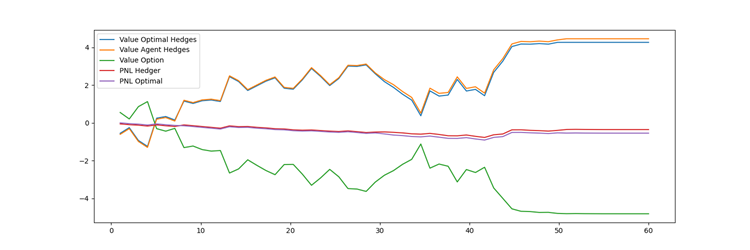Machine Learning Methods to Protect Banks from the Risks of Complex Investment Products
Published 05 January, 2024
Artificial Intelligence (AI) is frequently touted as a silver bullet to solve complex modeling problems. Among its many applications, it has been investigated as a tool to manage risks of complex investment products—so-called derivative contracts—in the investment banking area. Despite the multiple positive reports in this area, concerns have been raised about their practical applicability.
In a new study published in The Journal of Finance and Data Science, a team of researchers from Switzerland and the US explored whether reinforcement learning RL agents can be trained to hedge derivative contracts.
"It should come as no surprise that if you train an AI on simulated market data, it will work well on markets that are reflective of the simulation, and the data consumption of many AI systems is outrageous," explains Loris Cannelli, first author of the study and a researcher at IDSIA in Switzerland.
To overcome the lack of training data, researchers tend to assume an accurate market simulator to train their AI agents. However, setting up such a simulator leads to a classical financial engineering problem: choosing a model to simulate from and its calibration, and making the AI-based approach much like the standard Monte Carlo methods in use for decades.
“Such an AI can also be hardly considered model-free: this would apply only if enough market data was available for training, and this is rarely the case in realistic derivative markets,” says Cannelli.
The study, a collaboration between IDSIA and the investment bank of UBS, was based on so-called Deep Contextual Bandits, which are well-known in RL for their data efficiency and robustness. Motivated by the operational realities of real-world investment firms, it incorporates end-of-day reporting requirements and is characterized by a significantly lower training data requirement compared to conventional models and adaptability to the changing markets.
"In practice, it's the availability of data and operational realities, such as requirements to report end-of-day risk figures, that are the main drivers that dictate the real work at the bank, instead of ideal agent training," clarifies senior author Oleg Szehr, whom, before his appointment at IDSIA, was a staff member at several investment banks. “One of the strengths of the newly developed model is that it conceptually resembles business operations at an investment firm and thus is applicable from a practical perspective.”
Although the new method is simple, a rigorous assessment of model performance demonstrated that the new method outperforms benchmark systems in terms of efficiency, adaptability, and accuracy under realistic conditions. “As often the case in real life, less is more—the same applies to risk management too,” concludes Cannelli.

Contact author name, affiliation, email address: Oleg Szehr, Dalle Molle Institute for Artificial Intelligence (IDSIA) – SUPSI/USI, oleg.szehr@supsi.ch
Funder: This work was supported by UBS project LP-15403 / CW-202427
Conflict of interest: The authors declare that they have no known competing financial interests or personal relationships that could have appeared to influence the work reported in this paper.
See the article: Cannelli, L., Nuti, G., Sala, M., and Szehr, O., Hedging using reinforcement learning: Contextual k-armed bandit versus Q-learning, The Journal of Finance and Data Science, 9 (2023). https://doi.org/10.1016/j.jfds.2023.100101